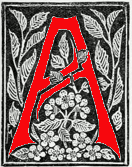
new era of liberal Sexual Hygiene and deeper psychological insight now opens, quite suddenly.
1885. Chevalier, Julien. De L’Inversion de L’Instinct Sexuel au Point de Vue Medico-Legal. Paris, 1886.
Krafft-Ebing, Richard Freiherr von. ‘Psychopathia Sexualis, with Special Reference to the Antipathic Sexual Instinct: A Medico-Forensic Study.’ Landmark of the new field. See Ellis (1897). Originally in German the work was translated often; appeared in constant revision, and made a 7th edition, 1893.
1886-1900. Antipathy = Contrary = Inversion = Homosexuality by social change.
1890. Schrenk-Notzing, Albert Freiherr von. Remarques sur le Traitement de L’Inversion Sexuelle par la Suggestion Hypnotique. (Remarks on Treatment of Sexual Inversion by Hypnotic Suggestion.) Paris. Revue de L’Hypnotisme. Charcot, Bernheim and Freud also now working with hypnotherapy.
1893. Moll, Albert. Les Perversions de L’instinct genital. Etude sur l’inversion sexuelle.(Perversions of the genital instinct. Study of sexual inversion). Paris. Carre. John Addington Symonds died 1893.
1896. Ellis, Henry Havelock and John Addington Symonds. Das Kontrare Geschlechtsgefuhl. Leipzig: Georg H. Wigand Verlag, pp.308. Original version of landmark study by Ellis & Symonds. Ellis (1897).
The last two authors above worked on sexual inversion collaborative material from June 1892 to April 1893 when Symonds died, though not before insisting that Ellis publish this planned Vol. 2 of the “Studies” first, before Vol. 1. Early British publication was suppressed by Symond’s literary executor, Horatio Brown. Ellis then succeeded in finalising the German edition, avoiding legal proceedings for obscenity in England, and turned to the U.S.A. and the publisher F. Davis Co. of Philadelphia. The English language 1st edition then appeared in 1901, reprinted 1902, 1904 and later in revised editions. Pirated editions appeared in England from the Watford University Press and elsewhere, some the project of Rowland de Villiers who was eventually duly arrested and prosecuted for obscenity. SOED gives Inversion M16, from Latin ‘invers’, invertere, v. To turn inside out. Listed are 22 uses and meanings of the term, 15 of which were available to the Victorians and from L16.
A final word or guess at the orientations of Freud and Ellis, who never met but who read each others relevant studies, and maintained a lifetime correspondence. Freud was on the surface more strongly masculine-heterosexual and traditional of his time and culture, though forced by family into a more flamboyant Jewish wedding ritual, when he himself preferred a quiet affair. Ellis as noted was a far less dominant marriage partner, closely allied to J.A.Symonds who, though married and a father, was a strong and controversial advocate of bisexuality and homosexuality. Both these latter men emphasised the ‘Sexual Inversion’ corpus of their work, and like Freud would leave “no stone unturned” in the field of psychosexual pathology. In his early and controversial study of sexual development in childhood Freud (1905, II, ‘Infantile Sexuality’) had pointed to the amorphous, wide-spread nature of the child’s early biology, and coined the phrase “polymorphously perverse” as involving all bodily orifices and skin surfaces. Children in development then, were seen not merely as residually bisexual, but as potentially ‘poly-sexual’. Adults, Freud wryly noted, became heterosexual and ‘normal’ via these developmental processes, whereas neurotics and perverts did not “become” perverse, but rather “remained” polymorphous and perverse, (I, 7), “Intimations of the Infantile Character of Sexuality”).
Bibliography
Angelides, Steven.History of Bisexuality. Chicago. Chicago University Press. 2001.
Ellmann, Richard.Oscar Wilde. London. Hamish Hamilton. 1987.
Ellis, Henry Havelock.Studies in the Psychology of Sex. Philadelphia. F. A. Davis Co. 1901.
Original publication in German, Leipzig 1897. Vol. 2 of an eventual six-volume set published in English before World War 1.
Ellis, H. H.Man and Woman. A Study of Human Secondary Sexual Characters. London. Walter Scott Ltd.
Freud, Sigmund.Fragment of an Analysis of a Case of Hysteria. (1901)1905.
Original publication in neurological journal; later in Freud’s collected works. See “Standard Edition of the Complete Psychological Works of Sigmund Freud”, edited by James Strachey, Anna Freud et al. in 24 vols. Vol. VII. London. Hogarth Press & Institute of Psychoanalysis. New York: I.U.P. 1953-75.
Freud, S.Three Essays on the Theory of Sexuality.
Original German edition at Vienna by Deuticke. 1905. For definitive English edition see above entry, Vol. VII.
Jones, Ernest.The Life and Work of Sigmund Freud. Vol. 1. London & New York. Hogarth Press & Basic Books. 1953.
Kaplan, Charles.The Only Native British Art Form The Antioch Review. 42 (3): 266-276. 1984.
Krafft-Ebing, Richard von.Psychopathia Sexualis, with special reference to Contrary Sexual Instinct. A Medico-Legal Study.Philadelphia. F. A. Davis Co. 1893.
Translated by C. G. Chaddock, from German 7th edition.
Kuppfer, Elisarion von.Lieblingminne und Freundsliebe in der Weltlitteratur.Berlin. Berlin-Neurahnsdorf A. Brand. 1900.
(Darling and Friend Love in World Literature). An anthology of critical texts. Dismissed the opinion of Hirschfeld and others, of inversion-homosexuality being classified as a “third sex”.
Meier, Christian.Athens. A Portrait of the City in Its Golden Age.New York. Henry Holt. 1998.
Symonds, John Addington.A Problem in Modern Ethics: being an inquiry into the phenomenon of sexual inversion.London. Privately printed. 1896.
Later editions, 1900-1901, bore the title “A Problem in Greek Ethics”.
Tarnowsky, Benjamin.L’Instinct Sexuelle et ses Manifestations Morbides. Au double point de vue de la Jurisprudence et de la Psychiatrie. Traitant de l’Inversion Sexuelle. Paris. Carrington. 1904.
(The Sexual Instinct and Its Morbid Manifestations. From the double viewpoint of Jurisprudence and Psychiatry. Treating of Sexual Inversion.) By a Professor of the Imperial Academy. St. Petersburg.
Thurman, Judith.Secrets of the Flesh. A Life of Colette. U.K. Ballantine Books. 2000.
Last Modified 30 January 2021